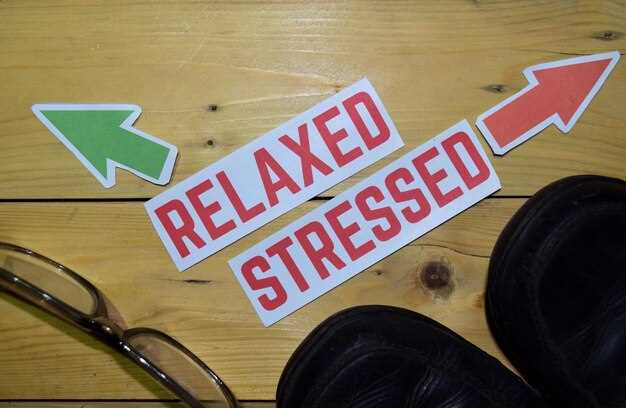Begin with a sixty-second grounding drill: inhale four counts, hold two, exhale six, repeat three cycles. This mindful pause lowers arousal and creates a balance between cognition and sensation. Visualize a known movie scene where a character finds steadiness; this demonstrates you are able to reframe the moment rather than letting tension rise.
Extend into a five-minute sequence: four rounds of paced breathing (inhale four, exhale six); a rapid body scan locating shoulders, jaw, belly; a brief relaxation gesture for each tense area; then a stable gaze on a fixed point to anchor attention, mindful focus; a relaxation response. This effective routine trains the nervous system to turn away from high arousal, fueling a steadier mood.
Over weeks, you become better able to hold calm longer. This routine helps you respond to stress rather than react, turning attention toward relaxation using a steady rhythm. Use the breath as fuel to sustain related goals; whilst you practice, you probably notice mood shifts, both subtle and meaningful.
As brodsky would suggest, brevity makes meaning; this approach keeps cognitive load low while preserving depth, offering a pragmatic path to balance during hectic days. The meaning here is practical: tiny, repeatable cycles train the nervous system, enabling calmer responses whenever stress spikes, probably improving mood and focus across tasks.
Immediate 5-Minute Reset Techniques You Can Use Right Now
-
Breath anchor: Box breathing for 60 seconds. Inhale through the nose for 4 seconds; hold 4; exhale for 4; hold 4. Repeat until body feels calmer. This simple cadence anchors the nervous system, reducing irritable mood at work.
-
Grounding scan: 5-4-3-2-1. Name 5 things you see; feel 4; hear 3; smell 2; taste 1. Your attention shifts to the present moment, reducing overwhelm.
-
Posture reset: Sit tall; drop shoulders; relax jaw; unclench fists. Pause for two breaths; feel gravity support your position.
-
Calming cue: Tell yourself this moment begins now; turn attention to a single comforting sound, a breath, or a texture.
-
Quick energy move: Stand, stretch arms overhead for 3 cycles; rotate wrists; sip water; keep gaze soft. These seconds restore alertness, reducing irritable mood at work.
For a shared moment, someone nearby can join; a brief group reset boosts focus for the whole team.
If someone else feels overwhelmed, invite them to participate.
Seem skeptical? This quick practice proves effective for many.
Where you sit, a quick rearrange improves comfort.
Experiencing a common surge of irritability? This set is related to simple, guided moves. A few seconds later, posture shifts; breathing slows; focus returns to the task ahead in the workplace. Most were surprised by waves of calm arriving, caused by paced cycles; momentum grows, productivity rises, yourself re-centered. If you felt burnt or lost, these steps help rearrange your environment without noise, enabling more calm, more focus, more productivity. Ultimately, the rhythm trains your nervous system to return to baseline.
5-Minute Breathing Reset: Box or 4-7-8 Pattern to Calm the Mind
Box breathing triggers a quick reset in under a minute. Box style cycles: inhale 4 seconds, hold 4, exhale 4, hold 4; repeat 4 cycles for about 60 seconds.
4-7-8 option: inhale 4 seconds, hold 7, exhale 8 seconds; repeat 4 cycles, about a minute total.
Choose one method daily; youre able to feel a shift. If you prefer variety, switch Box or the 4-7-8 method; most find a single option works best.
| Box breathing | Inhale 4 seconds; hold 4; exhale 4; hold 4. Repeat 4 cycles for about 60 seconds. |
| 4-7-8 pattern | Inhale 4 seconds; hold 7; exhale 8 seconds. Repeat 4 cycles for about 60 seconds. |
These tips boost wellbeing. Reclaim resting into life. Most know the feeling; listen to others. Priority to practice couple times daily. Advice helps deal with intense feelings. Practicing saying to yourself ‘I deserve back calm’ then learn to reset. youre able to handle calm or tense feelings, later respond with intention.
5-Minute Grounding Reset: 5-4-3-2-1 Sensory Anchors
Starting a quick grounding cycle: five things you can see, four you can touch, three you can hear, two you can smell, one you can taste.
Position feet flat, sit tall, breathe slowly for five cycles; inhale to five, exhale to five.
While you proceed, notice shifts: shoulders soften, jaw unclenches, chest expands, hands loosen. Doing nothing else is required.
If funks appear during a trip or busy moment, this brief anchor stays ready; it requires nothing else to begin.
This certainly supports wellbeing, becomes a priority, fuels the process of returning to the present; reach a calmer state sooner.
When a sensation feels physically difficult, you are able to start again; you wont need complex tools; just repeat starting steps, burned muscles included; if things seem heavy, breathe.
Upon completion, check mood; ready to call the next action while maintaining position, breathing; nothing else demands attention. Last, observe how mood shifts. This benefits both body, mind.
5-Minute Progressive Muscle Relaxation: Tension Release from Feet to Head
Step 1: Feet, calves–tense for five to seven seconds, then release; notice mood shift toward relaxed. A brief check-in after release shows changes in skin temperature, slower breathing, softer shoulders. Ready to proceed to next region, keeping attention on the sensation of ease.
Step 2: Calves, thighs–tense leg muscles five seconds, release; notice a break in edge of tension; watch signs such as smoother breath, lighter mood.
Step 3: Hips, abdomen, chest–tense core region five seconds; release; feel breath soften; ribs expand on exhale; notice less overall intensity in the torso.
Step 4: Shoulders, arms, hands–clench fists, flex biceps, press shoulders up briefly; release; feel muscles soften, posture settle, mood improving.
Step 5: Neck, jaw, face–tense neck modestly, bite lips or jaw, then release; observe tension drift away, facial muscles soften, eyes relax.
Next, set aside 60 seconds of quiet rest; guided cues keep focus sharp; these tips support consistency; during a stressful event fear or negative mood might spike; notice signs of recovery becoming faster; the aim lies in smoother mood transitions, better sleep, clearer thinking; daily practice builds a ready baseline.
These guided cycles are effective for experienced practitioners; still, experiencing high tension might occur; notice signs of relief; next cycles deepen the impact; goals include calmer mood, better sleep, steadier focus.
5-Minute Cognitive Reset: Pause, Label, and Reframe Distressing Thoughts
Pause for a minute, notice what feels loud, label the moment, then reframe the thought as a temporary signal that can be redirected toward a practical step. This quick action will sharpen focus rather than spiraling; results last only if repeated, again later if needed. Even when feeling down, this reset can help.
Step 1: pause. Step 2: label the pattern as unease, not fact. Step 3: reframe into a concrete action that helps wellbeing, such as a brief walk, talking with a colleague, or a quick breathing sequence. Such labeling makes goals tangible, related tasks simpler, leaving nothing specific.
Carry this into early shifts in the workplace; common triggers caused by fatigue appear in life; media headlines blur focus; a short music clip helps shift slumps into a natural flow. This technique helps you learn again; talking with colleagues, quick activities help sustain momentum.
Schedule a daily five-minute check, note what remains specific, such as triggers in life or workplace; then adjust changes. This technique trains patients to respond rather than react; they last well when repeated. Illness transitions or early symptoms can trigger this practice, while media, music, talking, activities support these shifts; they wont erase all symptoms, yet wellbeing grows over time.
5-Minute Movement Reset: Gentle Exercises to Break the Stress Loop
Which intensity begins here: a simple, low-impact sequence designed to shift feelings within minutes. Listening to feelings; arms stay relaxed; breathing steady; you keep moving without overexertion.
Hamle 1: Boyun rahatlatma – 60 saniye. Yavaşça başı omuz yönüne eğin, doruk noktada bir nefes için durun, ortalayın, diğer tarafa tekrarlayın, toplam 60 saniye.
Hareket 2: Omuz daireleri – 60 saniye. Omuzları kulaklara doğru kaldırın, geriye ve aşağı doğru yuvarlayın; nefesi sabit tutarak, düzgün bir ritimde tekrarlayın.
Hamle 3: Yerinde adım atma – 60 saniye. Yüksek diz kaldırma ile yerinde işaret et; kollar hafifçe sallanır; nötr pelvis, dik duruş hedefleyin.
Hamle 4: Kalça daireleri – 60 saniye. Elleriniz kalçalarınızın üzerine koyun, ayaklarınız omuz genişliğinde açık, kalçalarınızı saat yönünde sonra saat yönünün tersine döndürün, nefesinizi daire ile senkronize edin.
5. Hamle: Kol açıcılar – 60 saniye. Kollarınızı genişçe açın, omuzları öne doğru çemberleyin, ardından geriye doğru hareket ettirin, göğsünüzü açık tutun, omurganız dik, karnınız yumuşak.
Dinlenme hamleler arasındaki dinlenme isteğe bağlıdır; baş dönmesi veya sersemleme belirtileri ortaya çıkarsa, destek için bir duvara yaslanın ve ardından daha yavaş bir hızda devam edin.
"Yavaşça hareket edin," diyor rehber.
Duyguları dinleyin; ne zaman ortaya çıkarsa çıksın, rahat bir hızda hareket etmeye devam edin; bulunduğunuz yere göre, birkaç dakika burada, günlük olarak daha sakin duygulara doğru bakışı başlatan bir sıfırlama başlatır.
Bir kenara konuşurken, duygularla hızlı bir kontrol yapmak faydalı kalır.
Gerginliğin son izi nerede oturuyorsa, orada dinginlik gelmeye başlar.
Sorunlarla başa çıkmak daha kolaylaşır; hareket, duygu düzenlemesi ve ruh hali istikrarı için bir bağlayıcı görevi görür.
Genel olarak, günlük pratik daha sakin bir sinir sistemi destekler, günlük gerilime karşı olumsuz renklendirilmiş tepkileri azaltır.
Motivasyonsuz olanlar için bu hareketler rahatlama sağlar; Bunu minik dozlarda denemek yeterlidir; bir veya iki döngüyle başlamak motivasyonu yüksek tutar.
Yardım İsteme Zamanı: Uyarı İşaretlerini Tanıyın ve Sonraki Adımlar
Şimdi harekete geçin: Uyarı işaretleri kısa bir çökmeyi aştıktan sonra 24 saat içinde güvendiğiniz bir kişiyle veya bir uzmana danışın. Bu hamle, refahı korur; daha büyük bir zorluğun öncesinde destek ağınızı hazır tutar. Muhtemelen baskıyı azaltır; zor bir günün daha büyük bir krize dönüşmesini engelleyen daha güvenli bir süreç başlatır.
Yorgunluk gibi, yeterli dinlenmeden sonra geçmeyen belirtiler; uyku bozukluğu; iştah değişiklikleri; konsantre olmakta güçlük çekme gibi belirtiler arayın. Ağır bir ruh hali, gergin kaslar veya donuk görünen gözler desteğe duyulan ihtiyacı gösterir. Tüketilmiş enerji, yavaş konuşma veya sinirlilik de ipuçlarıdır. Bu işaretler tekrar ederse, güvendiğiniz biriyle iletişime geçmeye öncelik verin. Bu ipuçları ince olabilir; belki bunları başkalarıyla etkileşim şeklinizde veya duruşunuzda fark edersiniz.
Risk artarsa veya güvenlik güvensiz görünüyorsa, yerel kriz kaynakları veya acil durum servisleriyle derhal iletişime geçin. Arkadaşlarınıza, bir aile üyenize veya yakında bulunan bir komşunuza - güvenliği izleyebilecek birine ulaşın. Sakin bir şekilde müdahale etmeleri için eğitilmişlerdir; bu destek sizi dengede tutmanıza, riski azaltmanıza ve iletişimi korumanıza yardımcı olur.
Krizlerden önce başlayan kısa bir plan oluşturun. İletişime geçilecek üç kişi, kısa bir mesaj ve tercih ettiğiniz iletişim yöntemi listeleyin. Size yardımcı olacak belirtiler, tetikleyiciler ve kısa bir sıfırlama, bir yürüyüş veya enerji verici şarkılar dinlemek gibi sizi ayakta tutan adımların kompakt bir listesini tutun. Bu süreç, sağlığınızı destekler ve daha büyük düşüşlere kapılma şansınızı azaltır. Planı elinizin altında tutun; belirtiler ortaya çıktığında gözden geçirin. Bu dikkat değişikliği eyleme dönüşerek destek ağınızı güçlendirir.
İletişime geçtiğinizde, daha uzun bir konuşmanın öncesinde mesajınızla başlayın. Basit bir ifade gibi “I need support right now; I’m not feeling well,” açık beklentiler belirler. Eğer bir telefon görüşmesi tercih ediyorsanız, en kısa sürede konuşmak istediğinizi söyleyin. İlk temas, refahınıza dikkat çektiği bir akışı başlatır; bir friend veya someone Adınızla ilgili yanıtlar dikkatle verilir; bu destek sizi bir arada tutar, muhtemelen riski azaltır.
Kaynakları hazır bulundurun: kriz hatları, hareketli bir iletişim listesi ve planınızı belleğe güvenmeden ulaşılabilir bir yerde saklayın. Eğer evde yalnız kalamıyorsanız, bir arkadaşınızla veya tele-sağlık üzerinden bir profesyonelle iletişime geçin. Kendinizi tükenmiş hissederseniz, en güçlü tetikenden uzaklaşın, yavaş nefeslere odaklanın, ardından planınıza geri dönün. Bu uygulama, iyiliğiniz için yakıtı yeniden inşa etmeye başlar.
Unutmayın: destek çağırmak sessizliğe gömülmenizi engeller. Refahınız arkadaşlarınızla etkileşime girerek yükselir; gözler uyanık kalır; konuşma rutinlerin bir parçası olmaya devam eder; yalnız değilsiniz; yardım etmek için biri burada.

 Anksiyete ve Stresten 5 Dakikalık Sıfırlamalarla Kurtulma Yolları">
Anksiyete ve Stresten 5 Dakikalık Sıfırlamalarla Kurtulma Yolları">

 Kullanıcılar Arasında Güven Oluşturmak İçin Tanışma Siteleri ve Uygulamaları 5 Yoldan">
Kullanıcılar Arasında Güven Oluşturmak İçin Tanışma Siteleri ve Uygulamaları 5 Yoldan">
 Giydiğiniz Kıyafetlerin Performansınızı Nasıl Değiştirdiği – Bilimsel Destekli İçgörüler">
Giydiğiniz Kıyafetlerin Performansınızı Nasıl Değiştirdiği – Bilimsel Destekli İçgörüler">
 Yalnızlığın Gücü – Yaratıcılık ve Büyüme İçin Sessiz Zaman">
Yalnızlığın Gücü – Yaratıcılık ve Büyüme İçin Sessiz Zaman">